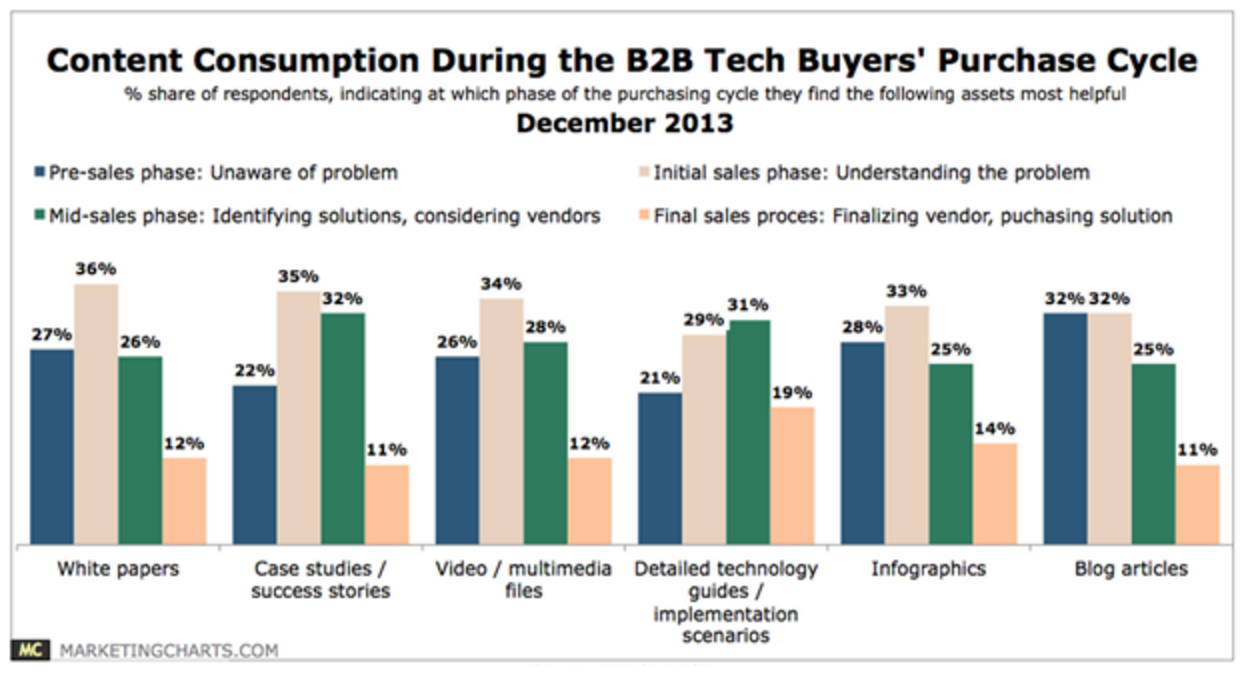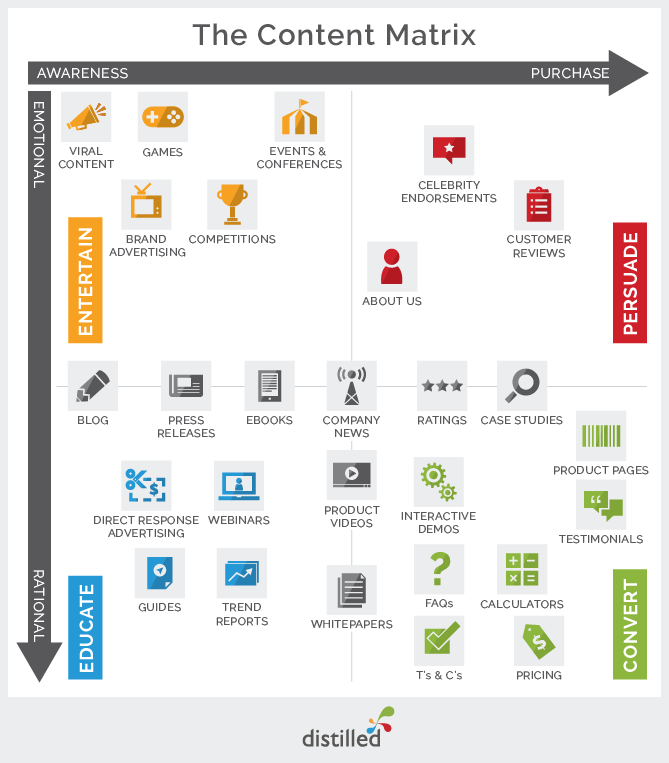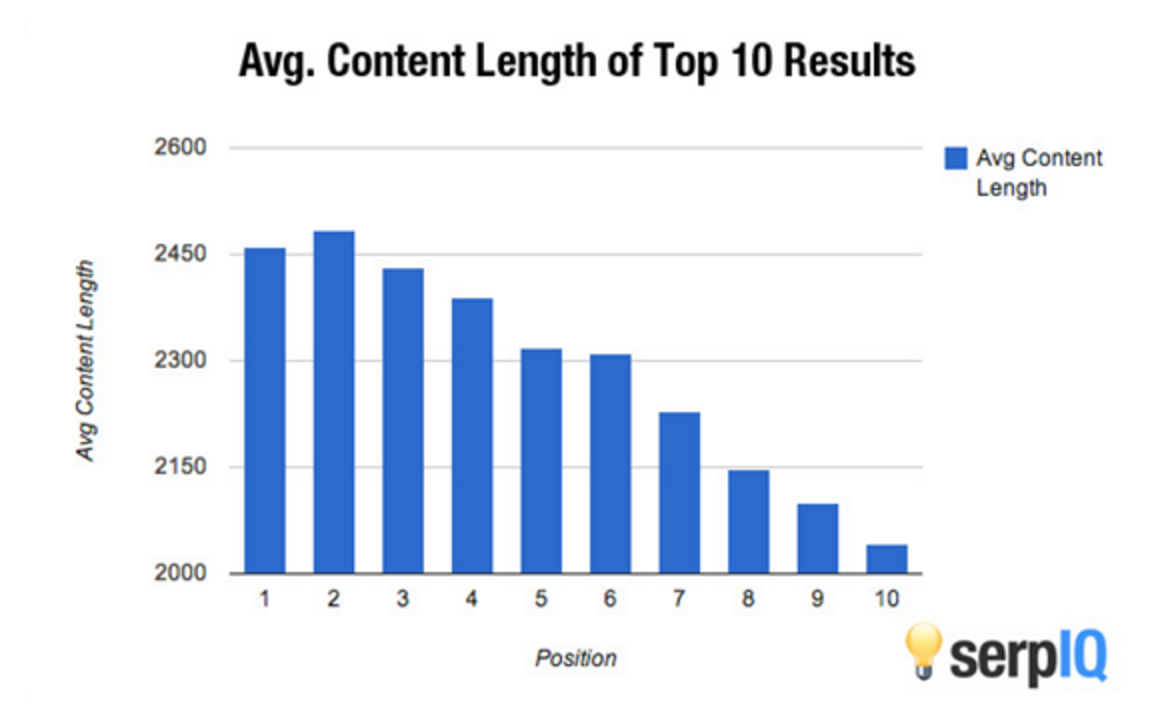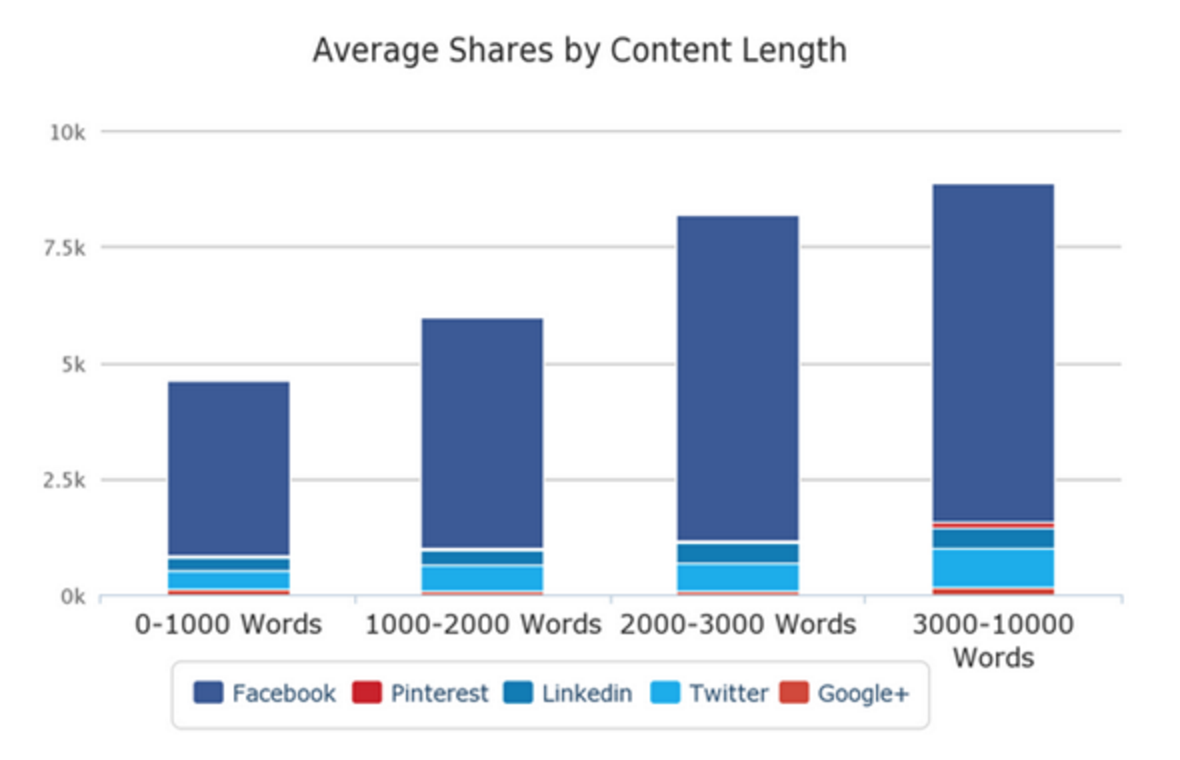Are You Overlooking these Content Marketing Basics?
So What Is Content Marketing?
Traditional marketing methods of the past have become outdated as audiences have lost interest and become more savvy in tuning them out. From browser-based ad blockers to streaming content online, ads have been relegated to the periphery at best, leading to low conversion rates, decreased traffic, and a lower return on investment. With over two million blog posts being published on the internet per day and publishing powerhouses like the Huffington Post updating over a thousand, it’s easy to get lost in the signal to noise ratio. To counter this, many businesses are choosing to implement more creative strategies that better engage their audiences. Delivering content that educates and informs helps to establish the company as experts in their field, increasing their credibility and shortening the sales cycle. And pumping out all of this content is no small (or cheap) feat either -- more time, money, and resources are being spent as:
- 35% of businesses have a documented content strategy;
- 42% of businesses will publish new content at least weekly; and,
- 55% of businesses will increase their content marketing spend in the next year.
The most effective of these strategies is content marketing, but what exactly is content marketing? Content marketing is “the strategic marketing approach of creating and distributing valuable, relevant and consistent content to attract and acquire a clearly defined audience – with the objective of driving profitable customer action.” In other words, instead of pitching your products or services directly, you’re delivering information that provides value to your audience and that they, in turn, will reward you with their business. Content marketing is a targeted strategy that involves creating insightful, engaging, and compelling content with the goal of increasing audience loyalty to create opportunities to convert them to customers.
The Five Basics of Content Marketing
We’ve recently explored some content marketing topics, including tools to automate your content production workflows and how to take advantage of Drupal’s content marketing modules, but none of the more advanced tips will help you if you don’t have the basics covered first. The Content Marketing Institute outlined the five basics of content marketing:
1. Understand your audience
Before you create your content, you need to understand who will be consuming it and why. To help answer this, many companies will create customer personas -- profiles of who their typical customer is, as well as who they want to target as new customers. And how are personas created? According to a survey conducted by MarketingSherpa, the most common tactics are:
- Interviewing prospects and/or customers;
- Interviewing sales teams;
- Surveying prospects and/or customers;
- Mining in-house databases to identify characteristics of best and/or worst customers;
- Evaluating web analytics reports;
- Interviewing customer service teams;
- Using keyword research to identify topics of interest; and,
- Monitoring activity on social media sites.
Once you know who your customer is, you can better identify what problems they may be looking to your business to solve.
2. Map the content to the sales cycle
As a marketer, your job is not just to create content that appeals to the persona(s) you constructed in step one, but to tailor it to help them progress through each stage of the sales cycle. For example, if your product is a piece of software, then the content you create to appeal to a prospective customer who is considering purchasing a single-use license will differ greatly from what you produce to appeal to a CTO who is evaluating enterprise-level SaaS solutions. Or at least it should! This step is supported by data. MarketingCharts analyzed six different content types and how useful the survey’s respondents found them during each stage of their buying cycle:  Here are the specific types of content that their results indicated you should produce at each stage:
Here are the specific types of content that their results indicated you should produce at each stage:
- Awareness -- blog posts, white papers, educational webinars, and infographics ;
- Evaluation -- case studies, product webinars, videos, and technology guides ; and,
- Purchase -- implementation guides, free trials, and live demonstrations
Forbes compiled the following content matrix, mapping various content types against the stages of the sales cycle vis-à-vis general persona types (emotional versus rational): 
3. Create the content
Now that you understand who your prospective customers are and what type of content to deliver to them at the different stages of the sales cycle, you’re ready to create the content. A report by the CMO Council and NetLine looked at the content types that are most valued by B2B audiences and ranked them as follows:  And another study, this one by serpIQ, looked at different content lengths and how they ranked on Google:
And another study, this one by serpIQ, looked at different content lengths and how they ranked on Google:  Longer content is also shared more often on social networks:
Longer content is also shared more often on social networks:  And finally, longer content will also help you get more inbound links, helping with your SEO efforts:
And finally, longer content will also help you get more inbound links, helping with your SEO efforts: 
4. Promote the content
Unfortunately, just because you build it, doesn’t mean they’ll come. You have the content, but you still have to market it! At a minimum, you should be promoting your content on all of your social networks. And if your content resonates with your audience, then they’ll share it too. Of course, not all content lends itself well to the short attention spans of social media -- for example, a white paper may not translate well to 140 characters. In these cases, you may want to consider other amplification methods such as Google AdWords campaigns, paid promoted posts on social media, or email marketing campaigns. Ideally, though, you’re creating enough content to appeal to your audience in the early stages of the sales cycle, which tends to be more easily digestible and sharable.
5. Measure and analyze the content
Measuring how your content performs against your own success metrics will help you craft more engaging content that better connects with your audience in the future.
- What types of content are read most often?
- What types of content are shared most often?
- What types of content generated the most leads?
- What types of content converted leads into sales?
As you learn more about your audience -- who they are, what types of content they consume, and how they consume it -- and you answer the questions above, you can continually refine any new content you create to better target them and convert more prospects into customers.
Conclusion
Your content marketing plan doesn’t have to be complicated, but neglecting it will result in you pushing random content to undefined audiences -- and wasting your company’s time and resources. But by understanding the basics of content marketing, you will be able to better identify who your audience is and intervene earlier in their buying cycle to establish your product or service as the solution to their problem -- even if they don’t know what problem they need solved before they engage with you.








